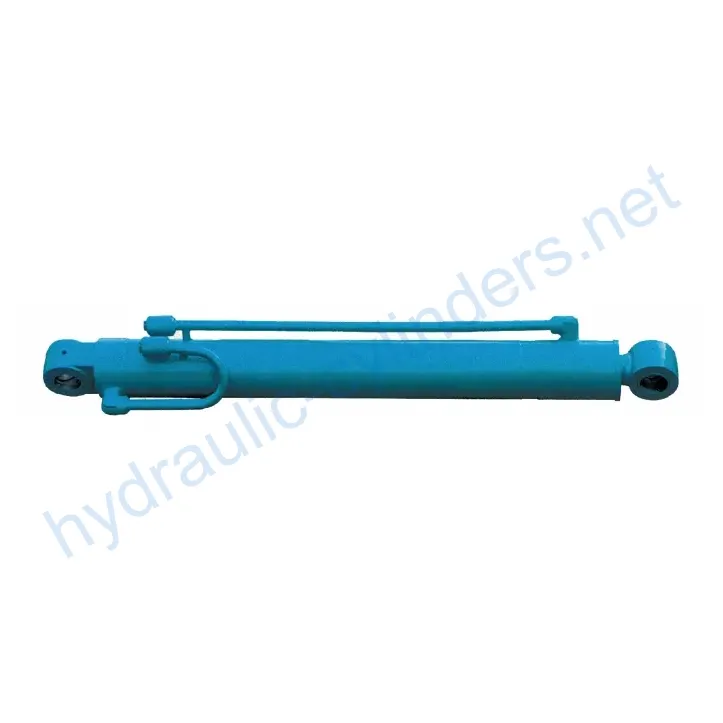Arm Cylinder For Kobelco Middle Excavator SK200-3-3E-5-6-6E-7-8
Introduction
The arm cylinder is a specially designed hydraulic cylinder that provides linear motion and power to the arm of various machinery, such as excavators, cranes, and mechanical arms. It plays a key role in hydraulic systems, enabling the efficient movement and control of additional tools or attachments. These cylinders not only ensure smooth motion but also withstand heavy loads, ensuring high efficiency and reliability of the machinery in various operating conditions.
Features
-
High Efficiency Transmission
The arm cylinder provides powerful linear motion and force, ensuring efficient performance during various operations.
-
Precise Control
Through the hydraulic system, the arm cylinder enables precise motion control, making the operation of attachments more flexible and accurate.
-
Strong Durability
The arm cylinder is typically made of high-strength materials, offering excellent wear resistance and corrosion resistance, suitable for long-term use in harsh environments.
-
Multi-functional Adaptability
These cylinders are widely applicable to various mechanical equipment, such as excavators, cranes, and mechanical arms, adapting to different working requirements.
-
Easy Maintenance
Designed with ease of maintenance and replacement in mind, the arm cylinder facilitates convenient periodic checks and maintenance, reducing equipment downtime.
Applications
-
Construction Engineering
In excavators and cranes, the arm cylinder controls the movement of the bucket or boom, enabling earthwork, material handling, and structural installation.
-
Manufacturing Industry
In automated production lines, the arm cylinder is used for the motion of robotic arms, enabling processes such as assembly, welding, and material handling, thereby enhancing production efficiency and accuracy.
-
Agricultural Machinery
In agricultural machinery such as harvesters and planters, the arm cylinder controls the movement of the operating arm, performing tasks such as seeding, fertilization, and harvesting.
-
Mining
In mining equipment, the arm cylinder is used to control the arm movement of mining machinery, enabling the extraction and transportation of minerals.
-
Logistics and Transportation
In forklifts and handling robots, the arm cylinder controls the lifting and movement of forks, enabling material handling and stacking.
Design Considerations and Selection Criteria
-
Load-bearing Capacity
The arm cylinder should be designed to withstand the intended load to ensure safe and efficient operation.
-
Sealing
Various sealing components, such as piston seals and rod seals made of wear-resistant materials like polyurethane and nitrile rubber, should be used to ensure proper sealing and prevent leakage.
-
Durability
The cylinder body and threaded end surfaces should undergo fine treatment to enhance wear resistance, ensuring long-lasting performance.
-
Safety
The design should incorporate safety features to prevent accidents and ensure the protection of operators and surrounding equipment.
-
Maintainability
Easy access for regular inspection, maintenance, and timely replacement of components should be considered to minimize downtime and ensure smooth operation.
Sealing and Lubrication
Various sealing components, such as piston seals and rod seals, should be used to ensure proper sealing. These seals are made of wear-resistant materials such as polyurethane and nitrile rubber. The cylinder body and threaded end surfaces are finely treated to improve wear resistance. Regular lubrication with appropriate hydraulic oil is necessary to ensure smooth operation and extend the service life of the arm cylinder.
Regular Inspection and Preventive Maintenance
-
Regularly inspect the arm cylinder for any signs of wear, leakage, or damage. Replace any worn or damaged parts promptly.
-
Keep the cylinder and its components clean from dirt and debris to prevent contamination and ensure optimal performance.
-
Monitor the hydraulic oil level and quality regularly. Replace or replenish the hydraulic oil as necessary.
-
Check all connections and fittings for tightness to prevent leaks.
Product Installation Guide
1. Prepare the necessary tools and equipment for installation, including a suitable lifting device.
2. Ensure the excavator is in a stable and secure position before starting the installation process.
3. Remove any protective covers or packaging materials from the arm cylinder.
4. Carefully position the arm cylinder in the appropriate location, aligning it with the mounting points on the excavator.
5. Use the appropriate bolts and fasteners to secure the arm cylinder to the excavator’s frame.
6. Tighten all bolts and fasteners to the specified torque settings.
7. Connect the hydraulic hoses to the arm cylinder, ensuring proper alignment and secure connections.
8. Test the arm cylinder for proper operation by moving the arm through its full range of motion.
9. If any issues or abnormalities are detected, assess and troubleshoot the problem accordingly.
10. Once the arm cylinder is properly installed and functioning, perform a final inspection to ensure all connections are secure and there are no leaks.
Safety Considerations and Environmental Factors
When using the arm cylinder, it is crucial to follow safety measures to prevent accidents and ensure the well-being of operators and surrounding personnel. Proper training and adherence to safety guidelines are essential. Additionally, considering environmental factors such as temperature and humidity can help optimize the performance and longevity of the arm cylinder.
Fault Diagnosis and Common Issues
1. Leakage: Check for any signs of fluid leakage from the arm cylinder. Inspect the seals and connections for damage or wear.
2. Erratic motion: If the arm cylinder’s movement becomes inconsistent or jerky, it may indicate a problem with the hydraulic system or internal components.

